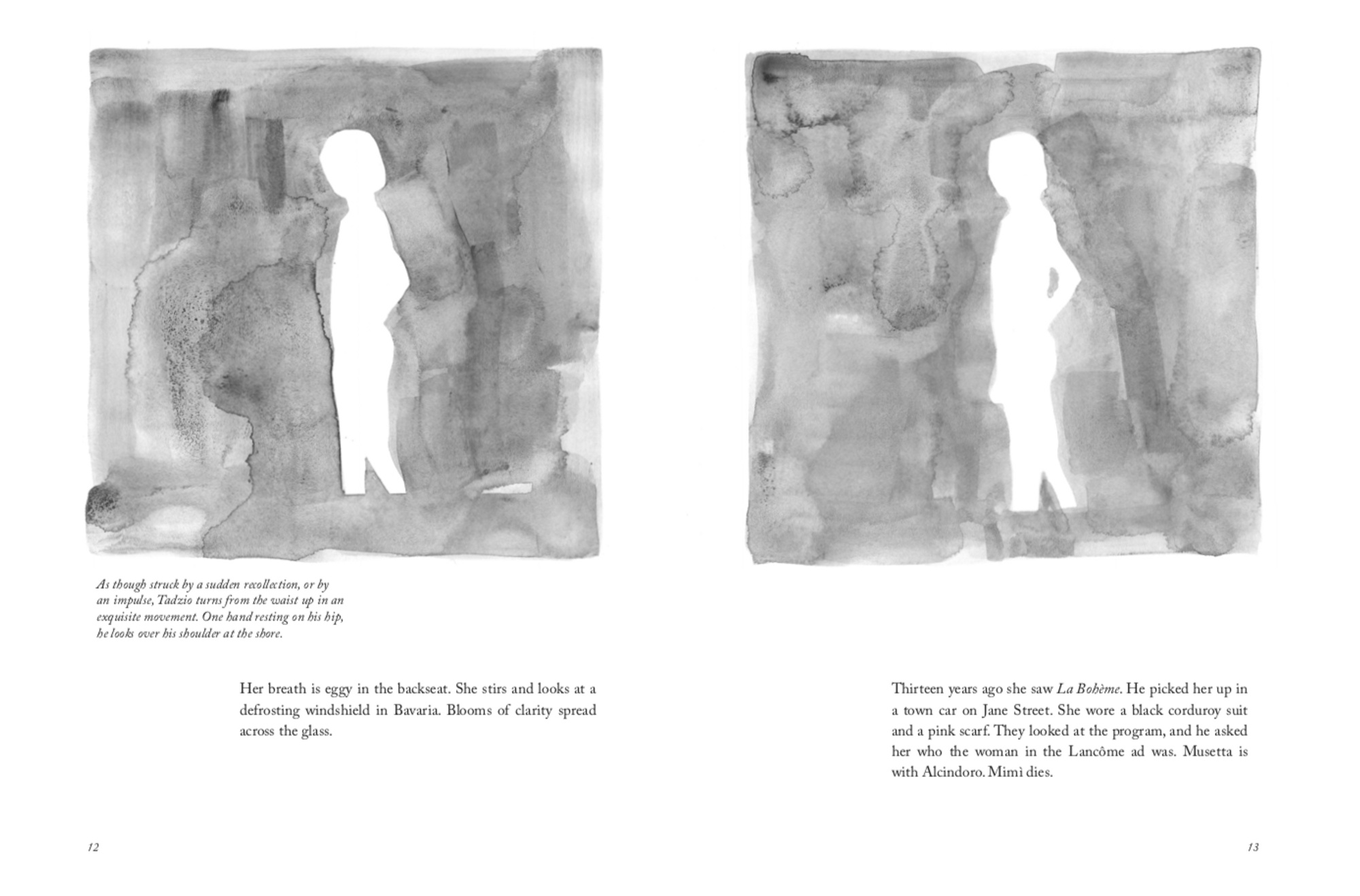I was home, visiting my parents for the weekend with my daughter, Alice. My parents were happy to see her and gave Alice toys to play with that I'd never seen before – old dolls and plastic baskets. When I asked where they had come from, my father said they had found them in the free area at the dump. After lunch one day, as Alice played in the living room, my mother told me a ghost story. – Sinforosa
So, to begin with, which is the more disquieting idea in that passage above? That your mother wants to tell you a ghost story or that she chose some toys for your daughter from the trash? Leanne Shapton has an impressive resume as an artist/writer/art director for well-known publications, and she brings all of these talents to Guestbook: Ghost Stories; a sort of scrapbook of found photographs, original watercolours, and added prose that leave the reader with an uncanny sense of dread. I suppose that the book's thirty-three entries can be thought of as “short stories”, and they range from the very short (Public Figure... is a prose poem made out of the comments on an Instagram-type star's [unshown] photo; So beautiful/I love/That looks relly relaxing...) to longish (Billy Byron charts the rise and fall of a tennis prodigy and the presence on the court that helps his game and destroys his mind, complete with many photos and drawings). Some entries read like traditional ghost stories and some seem to suggest the things that haunt us in our modern lives: In Natura Morta, another Instagram-style entry, sixteen black and white photos of a woman from the Sixties (?) and a woman from today (is that Shapton herself?) are shown without more commentary than the number of “likes” each receive – and it makes you wonder about the trajectory of photography and who took the photos of the woman from the past, in a time before every pose was meant to be widely shared; stalker or lover, the male gaze haunts the pictures.
She looked me in the eye and said, “This is a true story.” We were at a dinner party, a casual one in someone's enormous, expensively fitted kitchen. She had come alone, was recently divorced. I'd met her before, but we'd never really spoken or found common ground. I'd always thought she was chilly, but when we were sat next to each other at dinner and got to talking about books and people we both knew, I realized her shyness was the blurry, foggy kind – reserved, but not cold. – AlcatrazIn every case, Shapton is telling stories and making art. I had to fight an urge to scroll too quickly through the picture-heavy entries, and taking these slowly proved particularly rewarding. At the Foot of the Bed (a series of pictures of beds, some from catalogues), A Geist (posed pictures from celebrity/high society parties all featuring the same man somewhere), and Sirena Da Gali (an online catalogue of vintage dresses for sale) each have many pictures, but also much small print to read; and each of these entries became more sinister and uncanny as they stretched out. In this interview from The Creative Independent, Shapton explains her inspiration and thought processes behind this book – I especially appreciated the bits about multi-channel storytelling – and I thoroughly respect her ideas and their results. Not your typical read, but all the better for that. (Note: I read an ARC and passages quoted might not be in their final forms.)


